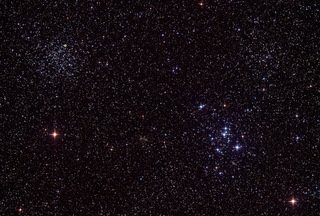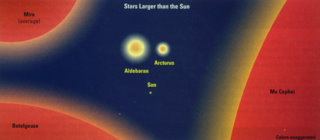|
Stars

Millions
of stars are over our heads every night, mostly unseen by
the
general world population.
The Universe
Ten Secrets of Alien
Science
Nikola Tesla
The Face On Mars
Stars
We cannot see very many stars from
where we stand. This
makes it difficult to comprehend how many stars there really are. That
is: How
many suns actually exist? And remember, each sun has the potential of
supporting many planets.
If you stand on the clearest and starriest of nights in a
remote pasture in Wyoming (away from city lights) all the stars you can
see
with the naked eye will total less than three thousand. Is it any
wonder we
have difficulty comprehending the existence of billions and trillions
of stars?
And many of those stars are in fact entire galaxies each consisting of
at least
a billion stars. Many contain trillions of stars.
Get
a Telescope
Modern telescopes
confirm that there are well over ten
billion galaxies, each consisting of untold billions of stars. Galaxies
are so
big that each is considered to be an island universe unto itself. Even
the
largest telescopes can detect less than one tenth of 1 percent of our
own
galaxy's trillion stars.
A telescope doesn't just magnify items. It gathers light
as well. This allows you to see more stars; for example, just looking
at the
same section of sky through a telescope will allow you to see ten times
more
stars than if you were just looking with the naked eye. Instead of
three
thousand, you could see and count thirty thousand!
Adding a camera and film lets the observer gather and
store light. Using a camera and film allows you to record and store
millions of
stars. The retina in your eye can't do this, that's why you can't see
all the
stars that are really there with the naked eye.
Life
on Other Planets
Our everyday assumption that we are
the only intelligent
life in the universe, until proven otherwise, stems partly from the
small and
limited number of stars we can actually see when we look up at night.
Statistically, if the universe consisted only of the stars we can see,
there
would be a chance we were the only folks in town. However, when we look
at the
staggering, true numbers of stars, it is logically and statistically
impossible
that there is no other life as intelligent as ours. If only one
planetary
system in a billion has intelligent life, then thousands of such worlds
are
hidden in any one galaxy alone.
A
Single Grain of Sand
Take a trip to the beach, if you
have one nearby. If not,
just go stand in a sandbox at any playground. Take a magnifying glass
with you.
Reach down and pick up a handful of sand. Now, sift it in your hand
until you
have only a single grain in your fingers. Look at the grain of sand
through the
magnifying glass. Look at the facets in that grain of sand. It's a
magnificent
piece of nature, like a masterfully cut diamond.
Now
make this assumption: This is the only grain of sand
in the world that has a structure like this. All the other grains of
sand in
the world are plain, with no distinguishing characteristics. Does that
make
sense? It's a ridiculous assumption, isn't it?
Well, that's what modern scientists have done with our
planet. They operate from the basic assumption that we are the only
planet with
life on it until proven otherwise; that all the other stars and planets
in the
universe are plain, no distinguishing characteristics, no life. This is
even
more ridiculous than the grain-of-sand assumption. I repeat: Does this
make any
sense?
The
Numbers
While you're at the beach or in the
sandbox, contemplate
this: There are more stars in the universe than there are grains of
sand on all
the beaches on our entire planet! Scientists estimate that in our
galaxy alone
(the Milky Way) there are over 100 billion stars (suns).
Million
vs. Billion
The words "million" and "billion"
sound alike. People throw both words around and use them
interchangeably as if
they were close to each other or related to one another. They are not.
There is
a huge difference between a million and a billion. Here is one way to
look at
it:
If you have a million dollars, you can spend a thousand
dollars a day for about three and a half years. But, if you have a
billion
dollars you can spend a thousand dollars a day for over two thousand
years!
A
Different Way to Look at the Possibilities
If our solar system is average, and
right now scientists
believe that it is, then most solar systems have about ten planets.That
means our galaxy has a thousand billion planets.
Just our galaxy.
If only one planet out of thousand has life on it, then
our galaxy alone has one billion planets with life on them! If
only one out every thousand of these life-bearing
planets has intelligent life, such as our planet, then there are one
million
planets like ours with intelligent life, just in our galaxy alone.
If
we make the assumption that humans represent an
average rate of development, then half the planets (500,000) would be
less
developed than we are and half them (500,000) would be more advanced.
In
1943 during World War II the United States
built ten thousand airplanes. Thirty years later we were in space. We
accomplished both feats with technology that was less than a hundred
years old.
*
This means 500,000 inhabited planets more advanced than
we are, combined, could have built five billion spacecraft in a single
year!

This graphic shows the comparative size of earth's sun. Our sun is the small dot on the blue field above.
The
Size of Stars
The size of a star can vary
dramatically. There are very
tiny stars the size of an asteroid, and there are huge stars. Some
stars are so
large that 25 billion Planet Earths could fit inside one of them.
Aliens & Satellites
Missing Space Probes
Aliens On The Moon
Home Page

|



